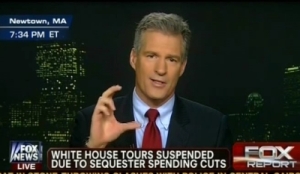 On Sunday at 5:11 p.m., The Boston Globe’s free Boston.com site published a toughly worded blog post about Jerry Remy’s future with New England Sports Network.
On Sunday at 5:11 p.m., The Boston Globe’s free Boston.com site published a toughly worded blog post about Jerry Remy’s future with New England Sports Network.
Headlined “Case closed: Red Sox fans not obligated to pay for Jared Remy’s defense,” the writer argued that NESN had a public-relations problem on its hands following a Globe investigation into Jerry Remy’s son Jared, accused of murdering his girlfriend, Jennifer Martel. The writer also found it ironic that NESN would remove Jenny Dell from Red Sox coverage because of her relationship with third baseman Will Middlebrooks while Jerry Remy stays in the broadcast booth.
And, oh yes, there was this: the writer was anonymous, identified only as the Obnoxious Boston Fan.
I’d never seen an anonymous blog on Boston.com before. And though I agreed with some of the sentiments he expressed in his post about Remy, it struck me as journalistically and ethically inappropriate for the Globe to be giving a platform to any anonymous writers — let alone one who was casting aspersions on others.
In response to my inquiry, David Skok, the digital adviser to Globe editor Brian McGrory, told me by email that Mr. OBF will henceforth be writing under his name. Skok said:
We are in the midst of reviewing all of the content being posted on Boston.com and BostonGlobe.com as we continue to move forward with the relaunch and the separation of the two properties.
During this review process, we discovered that one of our community voice bloggers was posting anonymously on the site. We don’t believe that this adequately meets our journalistic principles and practices for all of our Boston Globe Media Partners properties. As a result, the blogger known as the, ‘Obnoxious Boston Sports Fan’ will be identifying himself in all future posts.
We are also excited to announce that we are bringing several of our best ‘community voices’ on as freelance writers who will go through the standard copy editing process required for all of our freelancers. We believe that these voices are valued contributors to Boston.com and we look forward to giving their work the exposure and amplification that it deserves.
As a result of these changes, we have notified all of our contributors that the community voices program will be ending at the end of the month. We want to thank all of our bloggers for their contributions through the years and we hope that they will continue to be a part of our digital community.
And yes, according to Skok, Mr. OBF made the cut.
Here, by the way, is Boston.com’s Community Voices page. Other than Mr. OBF, Skok did not say who will be staying and who will be leaving.
On Twitter earlier today, Mr. OBF claimed he has won “multiple APSE awards” (and perhaps he has) as well as “a staff Pulitzer.” I have asked Mr. OBF for a response to the news that he will now have to identify himself, and I’ll post it if I hear from him. Regardless, it sounds like we’ll know who he is soon enough.
Update: And here is Mr. OBF’s response (drum roll, please): “Looking forward to it.”
Update II: Originally I wrote that Skok had told me Mr. OBF’s anonymous status had simply fallen through the cracks. I’ve removed it because it was my characterization of what he said, and it seems too close to a direct quote.
Update III: In case you’re clicking to this post directly, I want to let you know about this.





